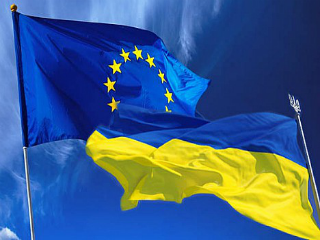by Radu Magdin*
The Covid-19 pandemic scaled up the magnitude of the humanitarian crisis, and donors around the world must face the existing challenges and deliver. However, in an era of global power competition, successful global communication campaigns are essential.
The “Global Humanitarian Overview 2021” published on December 1st, 2020 by the UN Office for the Coordination of Humanitarian Affairs has found that the humanitarian needs for this year reached a record number. According to the report, 1 in 33 people worldwide will need assistance and protection in 2021. The Covid-19 pandemic, with its health-related aspect and considerable and expected-to-increase economic impact, has greatly worsened the figures which were already at a record number in 2020 due to pre-existing factors such as protracted conflicts and climate change. Donors around the globe, be them governments, multilateral institutions, non-profits, philanthropic donors or the private sector, will need to step up. Solidarity will have to be matched by an effort similar to the scale of the pandemic. However, this is no easy task. A series of challenges, such as public support, budget constraints, global power competition, tailoring approaches and localization of funds are raising up on the donors’ agendas.
Around the world there is an international re-thinking of the aid for development industry. This stems from multiple reasons. Covid-19 pandemic has produced an economic recession, and when unemployment rises and welfare decreases, it is more difficult to make the case for increasing aid in another part of the world. For better or worse (in this case), the most important crises are the local ones. For example, the UK has confirmed at the end of last year that it will not spend 0.7% of gross national income on official development assistance, but only 0.5%, as spending more than that “is difficult to justify to the British people”, according to Chancellor Rishi Sunak. Also, after the EU approved its next budget and the recovery fund, some were disappointed that foreign aid was not allocated at the level that they hoped. Even more, in his final days in the office, President Donald Trump has criticized and tried to freeze certain funding intended for foreign aid, after many years of America First rhetoric. However, the narrative for foreign assistance can be re-written, and leaders with credible campaigns can secure public support. After all, from history we know that presenting the Marshall Plan as an effort worth taking was not easy work – but successful campaigning can be done. Moreover, the global scale of the pandemic could be used to bring home the idea that health vulnerabilities and threats for some are health and vulnerabilities for all.
Great power competition is another factor with significant implications in foreign aid, and which will not stagnate on the global scene in 2021. With Biden as president, there will probably be a strategic re-think of foreign assistance, which will not undo Trump’s efforts to counter China and its role in the developing world but will give more clarity on foreign aid’s role in the US’ strategic toolset. The EU is also pursuing a more “geopolitical approach” to foreign affairs, although specific details and tailored interventions still have to be figured out, including via inter-member States partnerships: for example, if, let us say, Romania has good connections in one African country, it should lead the way, its ROAID partnering there with Devco, Sweden’s SIDA or Germany’s GIZ for common goals, via practitioners networks. Recently, Foreign Secretary Dominic Raab affirmed that the UK’s new aid strategy will focus on countries in which British “development, security, and economic interests align,” spurring heated debates concerning the allocation of funds and whether they target the areas, sectors and people who need them the most. During a pandemic, aid for development is necessary, but we shall not forget that in an era of great power competition, good deeds can turn invisible if another actor has a stronger narrative, and the increase in soft power applies to whomever is better at storytelling. As we all seek to reduce the uncertainty around us, there is a great need for global narratives applied to international development that can play exactly this role.
In 2020, China has been under global pressure to offer relief in debt repayment to poorer countries which were hit by the Covid-19 pandemic. With vaccines coming out at the end of the year, 2021 will be a year more centred around vaccine solidarity and global vaccine capacity. If for developed countries the arrival of vaccines on the market looks like the light at the end of the tunnel, for the more vulnerable states it could be a far-away dream, as they are left behind in the vaccination race. COVAX, the initiative set up to ensure a fair access to vaccines, has had difficulties in raising enough support. This has created an opportunity window, and last year’s mask diplomacy has been already re-enforced by vaccine diplomacy, with some countries taking advantage of the limited supply of the Western Covid-19 vaccines and stepping in to offer alternatives and pursue their own agenda. Leaders in the aid for development sector risk being shadowed by this charm offensive and must therefore work more on image audit and perception management.
Here are some very important steps that donors should consider when working on their image: First, building the right narrative, one which makes people aware of the real situation and also makes the case of their moral and value-infused positions. Messages should be crafted so that they are easily understood, empathetic, with relevant and accurate information, but without being too pedagogical. Information and transparency breed confidence. Moreover, continuously reframing the message to win hearts and minds is key to a successful communication campaign: the context is more than a challenge, it is an opportunity, as its changing nature asks for tweaks and adjustment in search of efficiency. Last but not least, use global media efficiently and beware of fake news, disinformation and conspiracy theories, which are essential in ensuring that a public conversation is really possible and that messages can really get across. Cultivate credible voices that could intervene when needed and convey the message of hope and solidarity that keeps together an entire world.
*Dr Radu Magdin is CEO Smartlink Communications




 By: N. Peter Kramer
By: N. Peter Kramer
